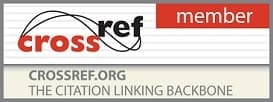- Printed Journal
- Indexed Journal
- Refereed Journal
- Peer Reviewed Journal
P-ISSN: 2394-1685 | E-ISSN: 2394-1693 | CODEN: IJPEJB
Impact Factor (RJIF): 5.38
2019, Vol. 6, Issue 4, Part C
Quantifying in-season practice demands of NCAA division I college football using integrated GPS, accelerometer and HR monitors
Author(s): Dr. Eric J Sobolewski
Abstract:
Purpose: The aims of this study was to determine the physiological demand of practice in National Collegiate Athletic Association Division I football players through Global positioning system, accelerometers and Heart Rate monitoring across position groups.
Approach: Thirty players wore a portable integrated monitor unit for 10-weeks during the fall football season. They were divided into position groups and compared across different speeds zones, HR zones, accelerations, work variables and distance traveled at different speeds.
Results: For all of the speed and distance variables there was significant (P<0.05) differences between position groups with wide receivers, running backs and defensive backs, running at high speeds and covering more distance. For HR data there was no major significant differences between position groups. For work variables, quarterbacks had the smallest work to rest ratio, while wide receivers, running backs and defensive backs had the smallest ratios. Compared to game data, practice is performed at slow speeds but covers greater distances.
Conclusion: Overall, skilled positions in football run at high speeds and cover more ground than their counterparts and accelerate the most while heat rate data indicated that internal demands of practice are similar across position groups.
Pages: 158-164 | 941 Views 230 Downloads
Download Full Article: Click Here

How to cite this article:
Dr. Eric J Sobolewski. Quantifying in-season practice demands of NCAA division I college football using integrated GPS, accelerometer and HR monitors. Int J Phys Educ Sports Health 2019;6(4):158-164.








 Research Journals
Research Journals